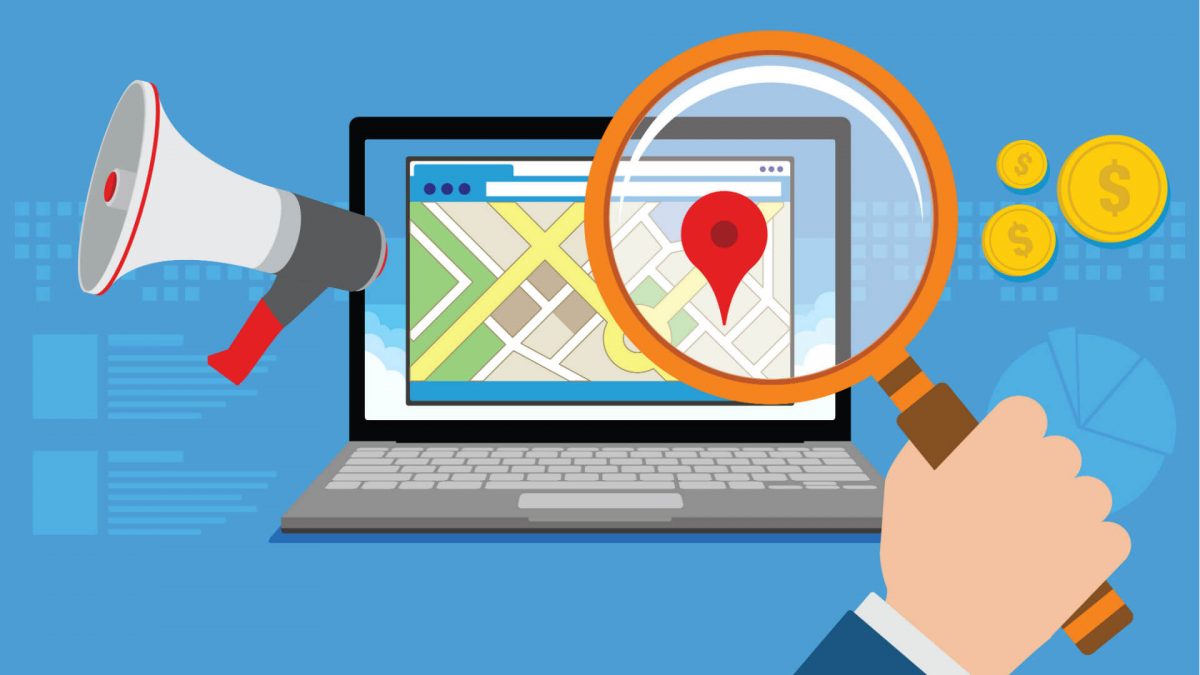Top 10 local search insights of 2016 by Wesley Land. Available from <http://searchengineland.com/top-10-local-search-insights-2016-264163> [December 5, 2016 at 11:50 am]
Columnist Wesley Young of the Local Search Association looks back at 2016 to find the top 10 insights that local search marketers should remember in planning for the year ahead.
As 2016 comes to a close and we begin planning for next year’s goals and budgets in earnest, it is prudent to remember to take time for reflection. Learning from successes experienced and mistakes made helps you set goals that will move you forward and plan for ways to get there.
To help remind you of some of the most important lessons learned this past year, below are my Top 10 Insights from 2016. In full disclosure, it’s my Top 10 list and thus is largely derived from the articles I wrote this year and statistics cited therein, but at least you’ll know you won’t find this list anywhere else! Here we go (in no particular order):
1. Sometimes simple is better than the best
My most-read article this year was “10 Ways to Simplify Your Local Search Marketing Strategy.” The space has gotten so crowded with marketing products, platforms and media that it is overwhelming even the experts. Think of what that means to the SMB. The attempt to understand, select and effectively utilize marketing media and technology is a struggle for most local business owners.
Sometimes, the best solution for an SMB (small to medium-sized business) isn’t what has the greatest potential for return. Rather it might be the one that they can work with most easily, manage within their time and budget and get a reasonable and secure return. There is value in simplicity and clarity.
2. Speed kills (like, totally slays it, dude)
Speed is a highly valued commodity. Consumers want it and bail when faced with slow sites. Google wants it to make sure consumers are happy and stay on the web instead of going to competitors’ app platforms. Google has even made it a ranking factor for its mobile search algorithm. So it was a huge surprise to learn that retail mobile sites are trending slower, with median load times of 4.33 seconds in 2013, to 4.8 seconds in 2014, to 5.5 seconds in 2015.
The slowdown is a result of heavier data load as a result of consumer appetite for content like graphics and video. But each second lost in load speed has detrimental effects on bounce rate, conversion rate and page views.
Local businesses need to be aware of and monitor how updating websites, adding content and taking other actions intended to improve the user experience may actually slow down the site and have the opposite effect. Fortunately, there are solutions for speeding up the consumer experience, and those who make the appropriate adjustments can zip ahead of the competition.
3. Changes in the traditional search model will challenge the status quo
For years, search has been dominated by the directory model — listings of businesses categorized by various filters and containing basic NAP data and perhaps some enhanced information such as reviews.
New changes are coming in the form of both media and model. In one year, voice search has gone from being a blip on the radar to a game-changer in search volume. The incredible growth is being fueled by better voice recognition to devices exclusively designed for voice interaction. The impact is significant, requiring a reexamination as to what keywords are used and how greater insight into intent may be derived.
The traditional model of “display” of results is also being challenged by creative thinkers. Search models, such as that of Thumbtack, which provides greater utility to consumers and higher-quality leads to local businesses, cannot be ignored.
Thumbtack seeks more details about what consumers need via a new customer intake questionnaire and passes that on to businesses who can identify the value of that lead and only pay for it when submitting a competing bid for the job. Personal note: I hired my first Thumbtack service provider during the writing of this article, and it worked out great.
These new media and models are potentially a threat to more traditional search and marketing providers who risk losing out if they don’t adjust.
4. Third-party listings are becoming de facto home pages
Company websites have consistently led the charts in ratings for media sources most likely to be relied upon when shopping for local goods and services. Yet as third-party listings make local business profiles more robust and rich with information, fewer consumers feel the need to click through. That makes managing these third-party listings ever more important — but businesses are not keeping up.
First, the majority of local businesses are not claiming the free profiles available on sites like Google My Business (56 percent have not claimed their listing), Yelp (66 percent) and Yahoo, YP.com, Bing and the BBB, all of which have unclaimed listings rates of around 80 percent or more. Even though these are tasks that the small business can do on their own, it behooves marketers to make sure to cover the basics when talking to both existing and prospective clients.
Second, those listings need to be actively managed, and one element often overlooked is profile images. Consumers respond to images at a rate that cannot be ignored. Ninety-three percent of the most engaging Facebook posts were photos, and content with images are shared three times more than those without.
Further, 46 percent of consumers felt website design was the top criterion for deciding whether a company is credible or not, and with these third-party listings being used like de facto home pages, profile images on those sites have a big impact on a local business’s reputation, brand and identity.
But on Google, you can’t just set it and forget it. Google bots unpredictably, and without any consistency, change profile images across devices and platform. Make sure you check back frequently to ensure your profile image reflects the identity you want to convey.
5. Traditional media is still relevant in the digital age
While digital media gets all the attention because of its growth, traditional media is hanging surprisingly tough. Many SMBs are loath to get rid of their print media marketing, in large part because it’s the way they’ve traditionally reached their established customers. And returning customers are valuable.
Google reports that it costs five to ten times more to attract a new customer than it does to retain an old one. Whether it be a local business trying to keep customers or a marketer retaining SMB advertisers, losing a customer to churn hurts.
And traditional marketing still delivers a meaningful volume of business. With the proliferation of media channels, platforms and devices, audience reach has been heavily diluted in all but a few dominant channels. So reaching your existing customers via traditional media remains important and cost-effective.
6. Non-local consumers are very valuable to local search
Local search and location-based marketing typically focus on the local audience, a strategy that seems completely logical. However, a significant portion of revenue for local businesses actually comes from non-local customers.
According to a case study I did on my hometown of Frisco, Texas (population 140,000), 33 percent of business to local storefronts comes from out-of-town visitors. Failing to account for this significant share of revenue could make the difference between thriving and flailing. And treating them the same as locals in your search marketing strategy is a mistake.
Non-local customers are more likely to use broad discovery search, so they will use different keywords from the ones local customers use. That will also impact the importance of some typical metrics used to measure the success of campaigns, such as page-one search ranking and CTR. So make sure to have a strategy to reach non-local customers.
7. Your largest clients may be at risk from co-op competitors
A lot of co-op funds are going unused: estimates range from $14 to $35 billion every year. That’s not particularly new news. But as a result, new players and new technologies are emerging to try to claim those funds. And they are attracting the attention of brands who see opportunities for new efficiencies and increased return over traditional methods, which in turn is leading to a change in the way brands are controlling payouts. These changes often favor the new players and technologies.
Traditional agency users of co-op with brand clients need to be aware of this threat — that they may soon not be competitive to some of their largest and best clients when compared to the new players.
These traditional players must understand how the market is changing and make adjustments that demonstrate their services provide value and quality and prove that they understand new co-op media such as search and display.
8. Short and fractured attention spans demand changes to the way we serve content
It’s tempting to find where your audience is spending time and try to meet them there. But the path to purchase has become so complex that you may end up chasing and never catching your customer. Consumers today reference many different media and information sources spread across various devices, often whenever they can find spare moments and gaps in busy schedules.
Google recorded an 18 percent decline in time spent per website this year. That likely translates across all media channels, as time spent is diluted across the increasing number of outlets and the way we access content changes. Google also reported that 91 percent look up information while in the middle of a task, and 82 percent consult phones while standing in a store.
Thus, content must be concise and to the point, convey key and relevant information and educate the user with information designed to make decisions. Failure to do so will quickly lose buyers, as 33 percent of mobile users switch to a competitor that does provide helpful information, and 43 percent ignore those who don’t.
9. Offline shopping experiences that don’t match your online one are problematic
Much of the change that is taking place in the marketplace is focused on the online experience, as new technologies, social media, graphics, video and slick user interfaces draw the attention of both audiences and advertisers. E-commerce also keeps humming along with upgrades to the payment systems that help with seamless online checkout processes and speedy mobile payments.
But offline purchases still rule. And unfortunately for many customers who buy in-store, there is a distinct disparity between the online experience getting you to a store and the offline in-store visit.
Online to offline isn’t just about attribution. The offline experience needs to be a continuum of previous online actions. Ask questions, or if possible, pull up user accounts or tracked online activity to determine what has already been done by the customer. Pick up where the customer left off, or help identify areas of need that remain in order to make a decision. Use of technology in the store that is similar to that used by the consumer online can help bridge the gap.
Failing to upgrade your in-store experience to match that of your business’s online one risks frustrating your buyer. Make sure the two complement each other and that inventory, employee training and technology are not siloed into online/offline categories.
10. Reviews reflect your online reputation, whether you like it or not
I’ve defined “reputation” as follows:
Your reputation is not what people tell you they think of you; it’s what they say about you when you’re not around.
And consumers do that to local businesses every day, through numerous review outlets.
Reviews are now a fundamental part of the buying decision for many products and services. Whichever way you dice it, the numbers are significant. One study shows 91 percent of consumers rely on reviews regularly or at least occasionally to inform their purchase decisions. Another finds that reviews impact decisions for 67 percent of consumers.
Yet many small businesses are bitter about negative reviews. While the emotion is understandable, the above numbers reveal that ignoring review sites out of spite is a battle you won’t win and can’t practically do — reviews are now incorporated broadly across all forms of media.
Instead, reviews must be faced head-on, and there are some encouraging numbers there, too. Some say 70 percent of consumers will leave a review when asked, while others say 90 percent. Yet as few as seven percent are asked to do so. Thus there is a big opportunity to get positive reviews for your business across the web, not just on Yelp, but also on Google, TripAdvisor, Yellow Pages sites and other directory listings.
Conclusion
And there you have it — my top 10 insights for 2016. Some may not seem particularly revealing in terms of an eye-opening “wow” factor, but then again, it’s surprising how many times the obvious is overlooked, ignored or even deliberately countered. So I hope you’ve had a successful and rewarding 2016 and that you can use even a few of these tips for your planning in continuing that success in the year to come.
Top 10 local search insights of 2016 by Wesley Land. Available from <http://searchengineland.com/top-10-local-search-insights-2016-264163> [December 5, 2016 at 11:50 am]







Search engine optimization (SEO) means different things to different people.